Zoom
Trash

Learning to Go: Lesson Ideas for Teaching with Mobile Devices, Cell Phones, and BYOT. Every day, people around the world communicate, connect, and learn digitally on the go.
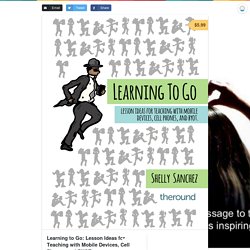
Our students spend hours with their devices and digital tools. Back to School Selfie Adventure for Your Students! Part of the Effective Technology Integration tips category!
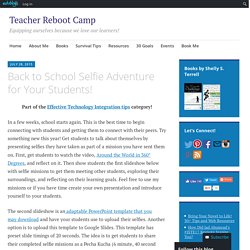
In a few weeks, school starts again. This is the best time to begin connecting with students and getting them to connect with their peers. Try something new this year! Get students to talk about themselves by presenting selfies they have taken as part of a mission you have sent them on. Digital Activities & Icebreakers for Gen Y. Recently added to the Survival Tips for Teachers “The number one benefit of educational technology is that it empowers people to do what they want to do.
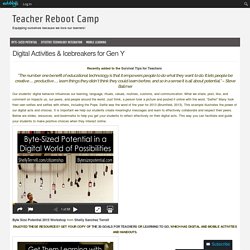
It lets people be creative … productive … learn things they didn’t think they could learn before, and so in a sense it is all about potential.” – Steve Ballmer Our students’ digital behavior influences our learning, language, rituals, values, routines, customs, and communication. What we share, post, like, and comment on impacts us, our peers, and people around the world. Just think, a person took a picture and posted it online with the word, “Selfie!” Tips. Let’s Get to Know You! 20+ Icebreakers for Kids. “You can discover more about a person in an hour of play than in a year of conversation.” by Plato The beginning of the school year is a great time to lay the foundations for transforming your young learner classes into peer communities.
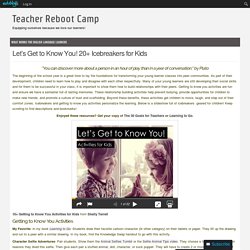
As part of their development, children need to learn how to play and disagree with each other respectfully. Many of your young learners are still developing their social skills and for them to be successful in your class, it is important to show them how to build relationships with their peers. Getting to know you activities are fun and ensure we have a semester full of lasting memories. These relationship building activities help prevent bullying, provide opportunities for children to make new friends, and promote a culture of trust and scaffolding. Enjoyed these resources? Goal: Build Your Teacher Survival Kit. 20 Ways to Bring Your Textbook to Life! Included in the Digital Tips Advent Calendar and part of the Effective Technology Integration category I never teach my pupils.
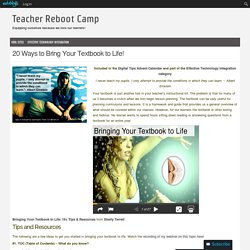
I only attempt to provide the conditions in which they can learn. ~ Albert Einstein Your textbook is just another tool in your teacher’s instructional kit. The problem is that for many of us it becomes a crutch when we first begin lesson planning. The textbook can be very useful for planning curriculums and lessons. Tips and Resources. Spice Up That Lecture! 20+ Ideas & Resources. The How to of Learning Stations.
Classrooms as Playgrounds. Teacher Zen. Tech Funding. Classroom Management. Community Building Activities. Lesson Plan Resources ELT. Lesson Plan Resources ELT. Learning Inventories. Surviving the 1st Month of School: 20+ Tips & Resources. Posted by Shelly Terrell on Tuesday, August 23rd 2011 Many of us will face many new learners in the next few days.
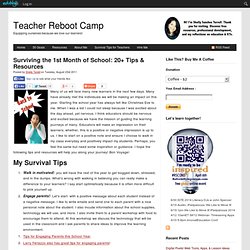
Many have already met the individuals we will be making an impact on this year. Starting the school year has always felt like Christmas Eve to me. When I was a kid I could not sleep because I was excited about the day ahead, yet nervous. I think educators should be nervous and excited because we have the mission of guiding the learning journeys of many. Surviving the 1st Month of School! 10+ Tips & Resources. A Teacher’s Guide to THE PERFECT SUMMER In 15 Simple Steps. “You’re a teacher?
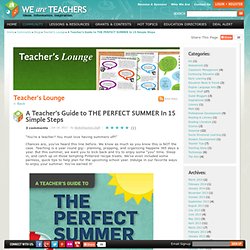
You must love having summers off!” Chances are, you’ve heard this line before. Glossary of Instructional Strategies. Current number of strategies and methods: 1271 Last updated: 27 July, 2013 Definitions written by Kelly Jo Rowan. ©1996-2013 Kelly Jo Rowan. 10 + 2 (Ten Plus Two) Direct instruction variation where the teacher presents for ten minutes, students share and reflect for two minutes, then the cycle repeats.
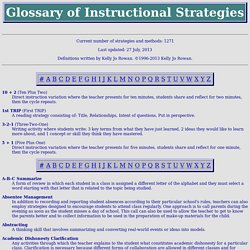
Creating Passion Projects (Genius Hour) Barefoot In the head. A few year ago, I was a bit curious about how well learners can evaluate each other.
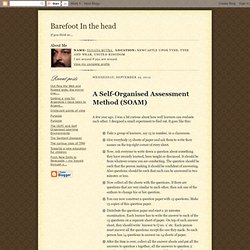
I designed a small experiment to find out. It goes like this: Take a group of learners, say 15 in number, in a classroom. Give everybody 15 sheets of paper and ask them to write their names on the top right corner of every sheet. Now, ask everyone to write down a question about something they have recently learned, been taught or discussed. In other words, you have conducted an examination without making a question paper and without having to mark a pile of answer books. What Makes a Great Teacher? - Amanda Ripley. On August 25, 2008, two little boys walked into public elementary schools in Southeast Washington, D.C.

Both boys were African American fifth-graders. The previous spring, both had tested below grade level in math. One walked into Kimball Elementary School and climbed the stairs to Mr. William Taylor’s math classroom, a tidy, powder-blue space in which neither the clocks nor most of the electrical outlets worked.